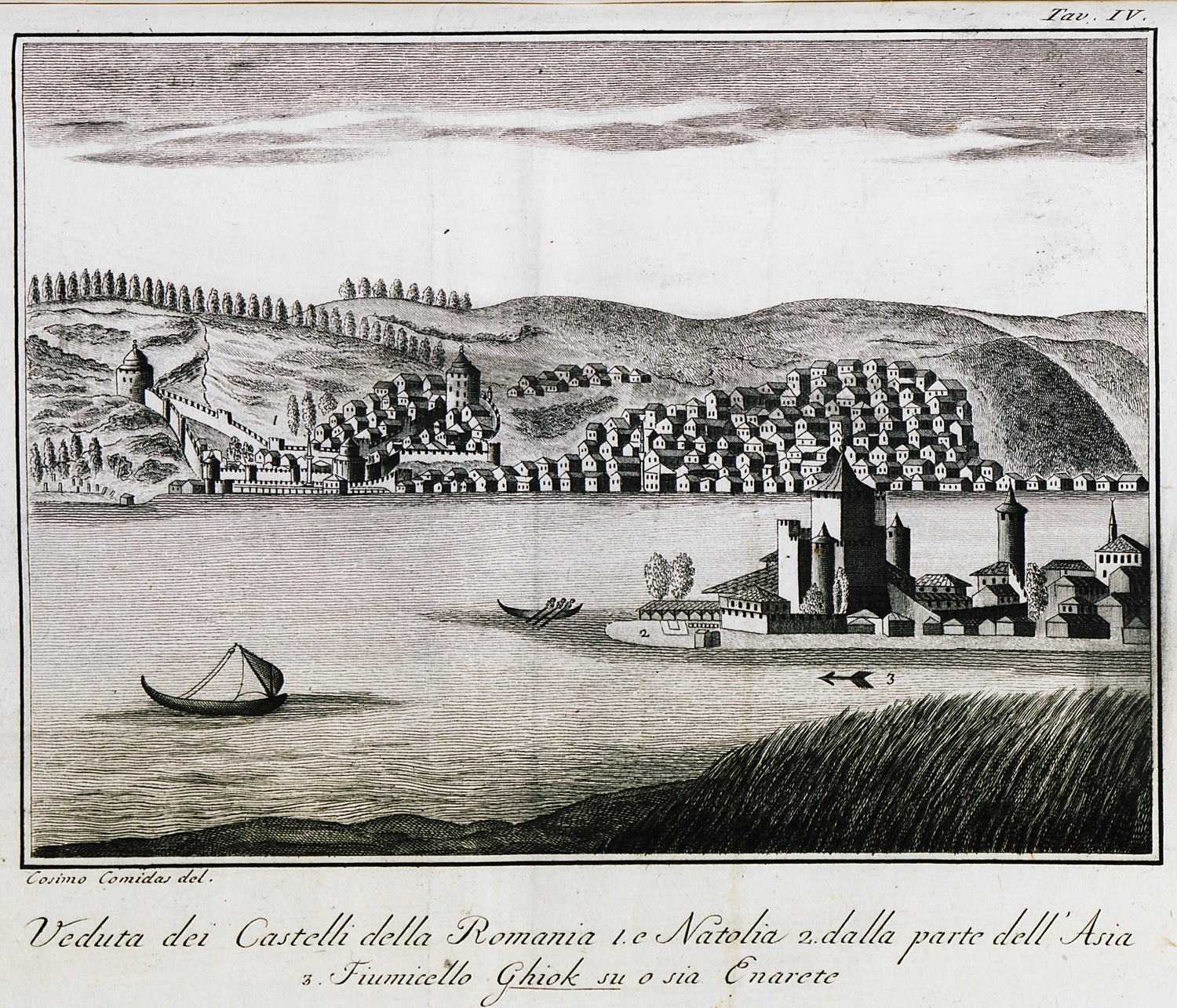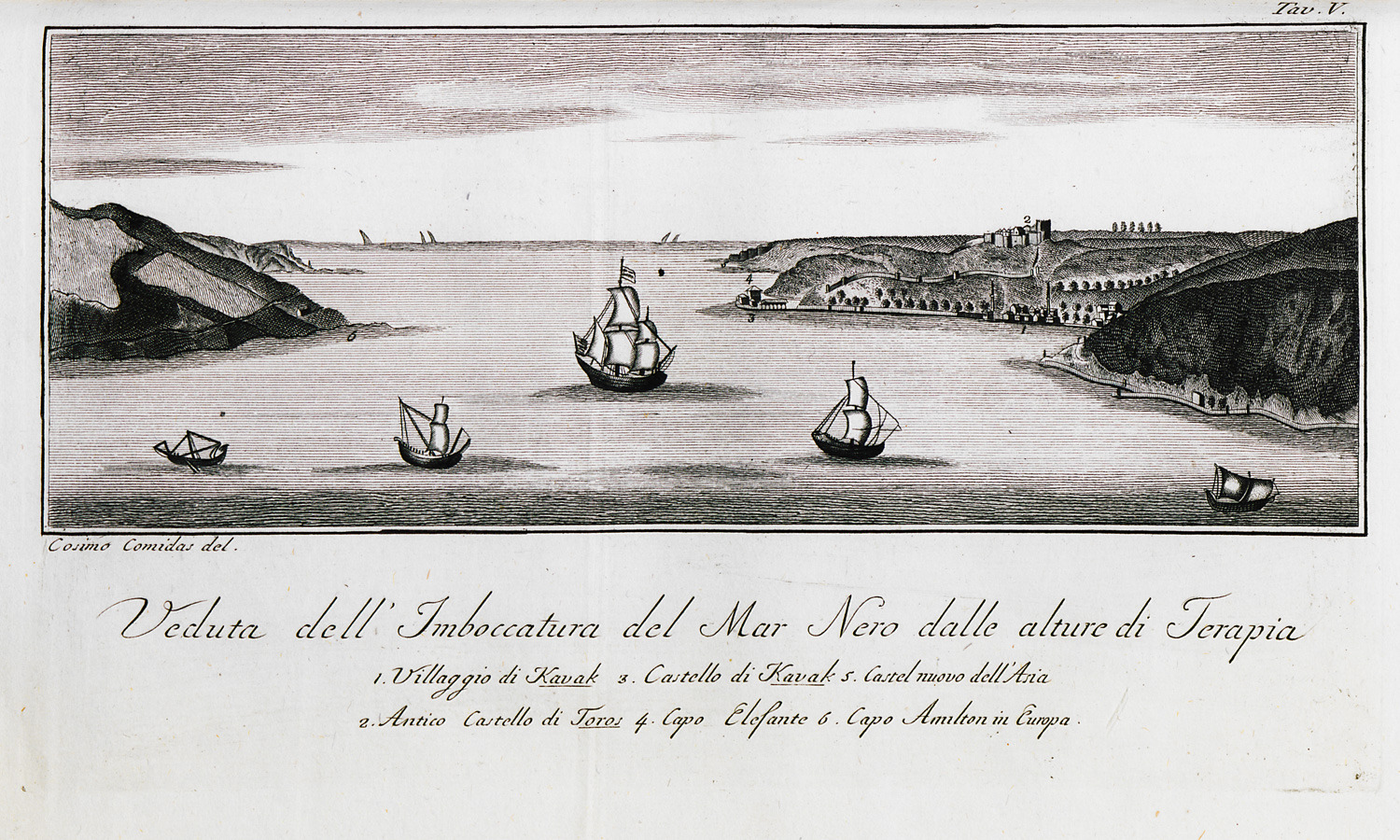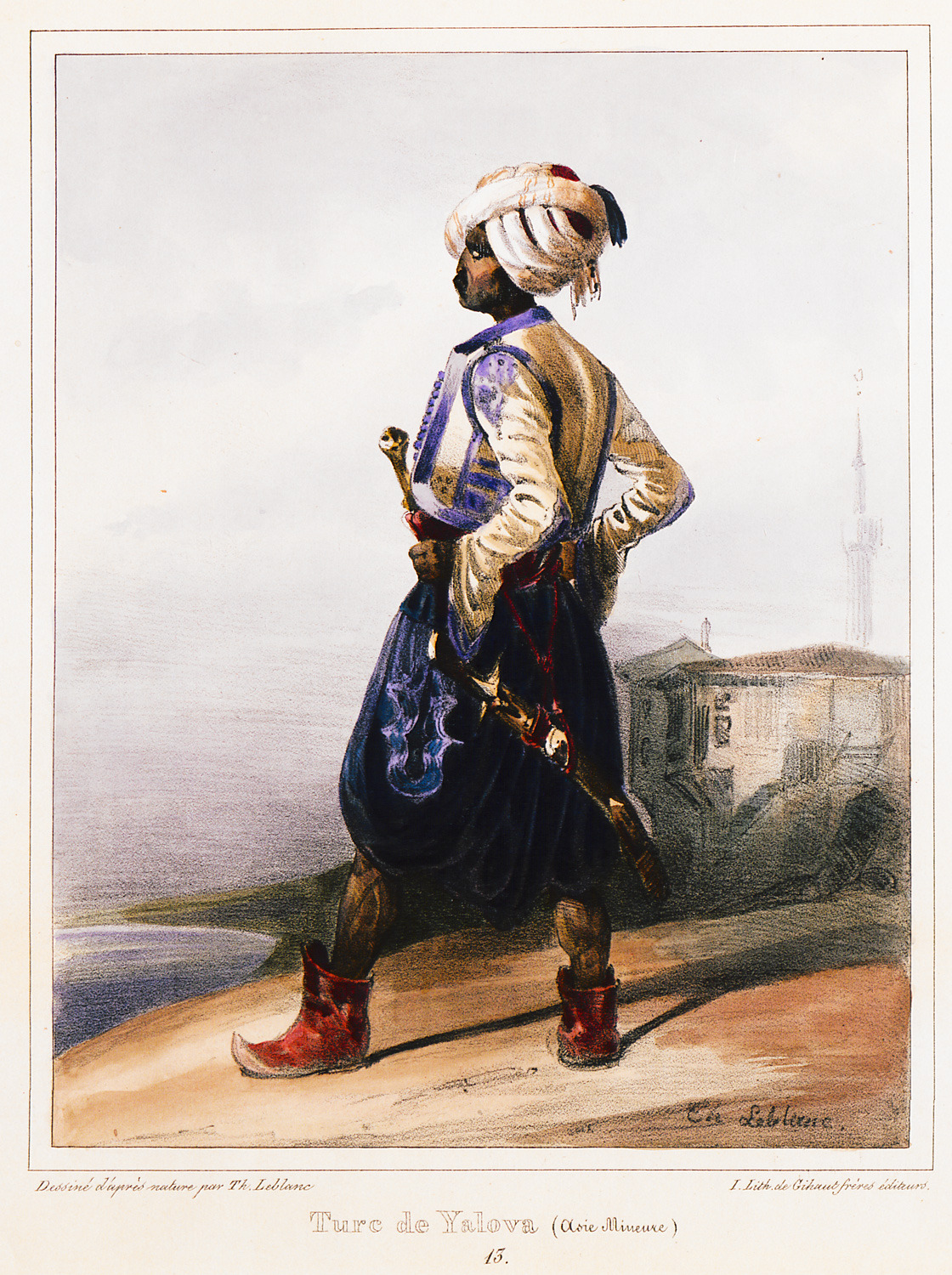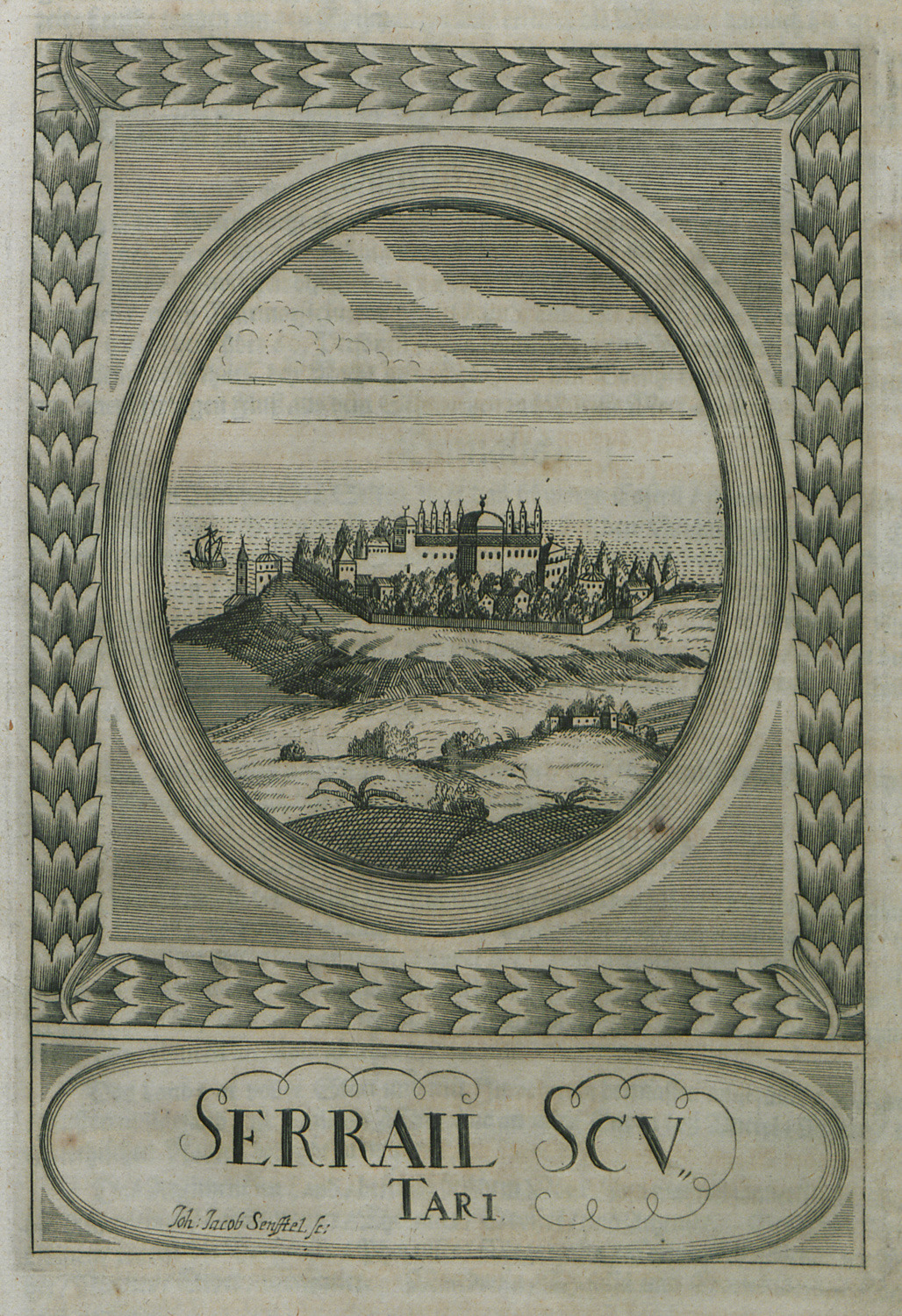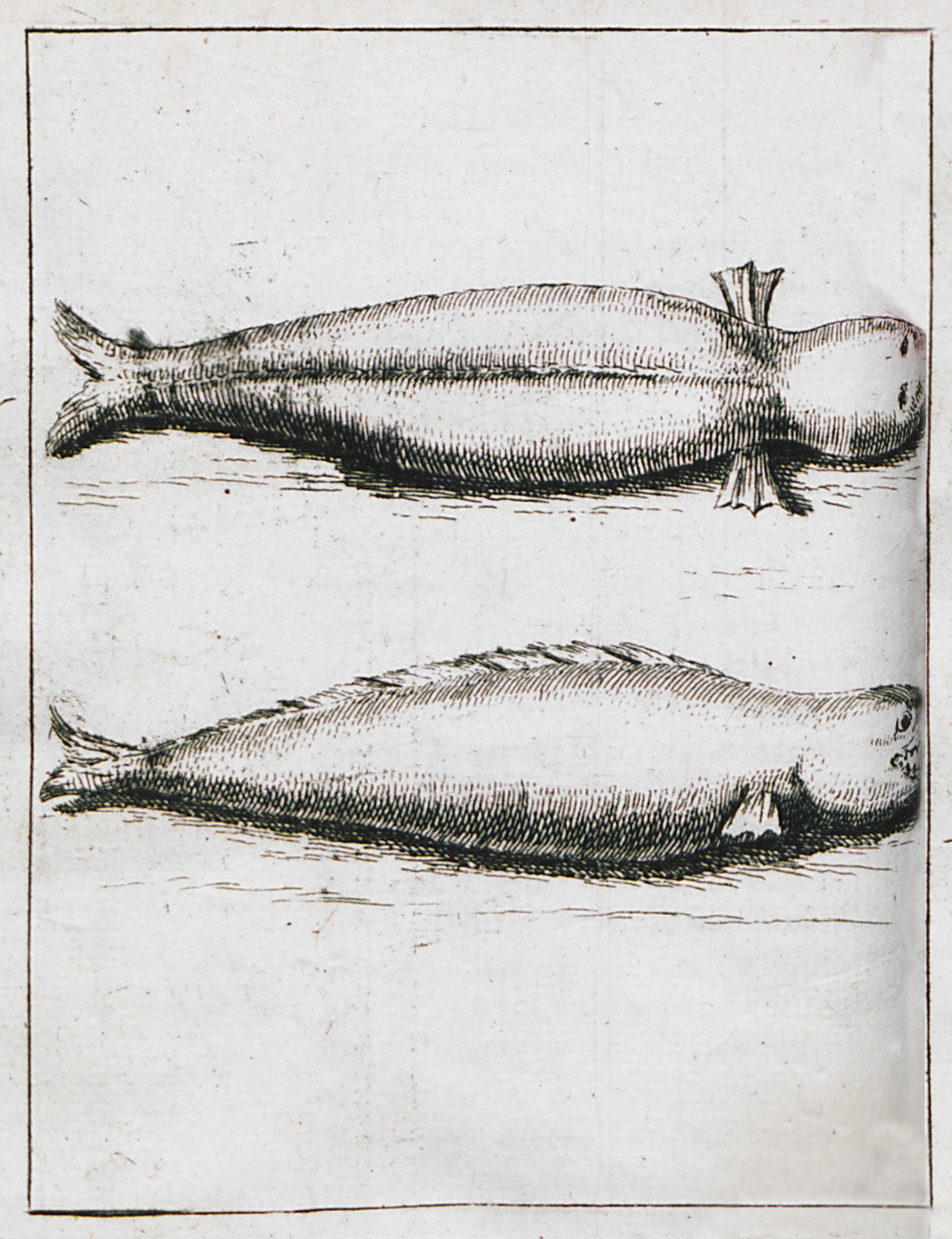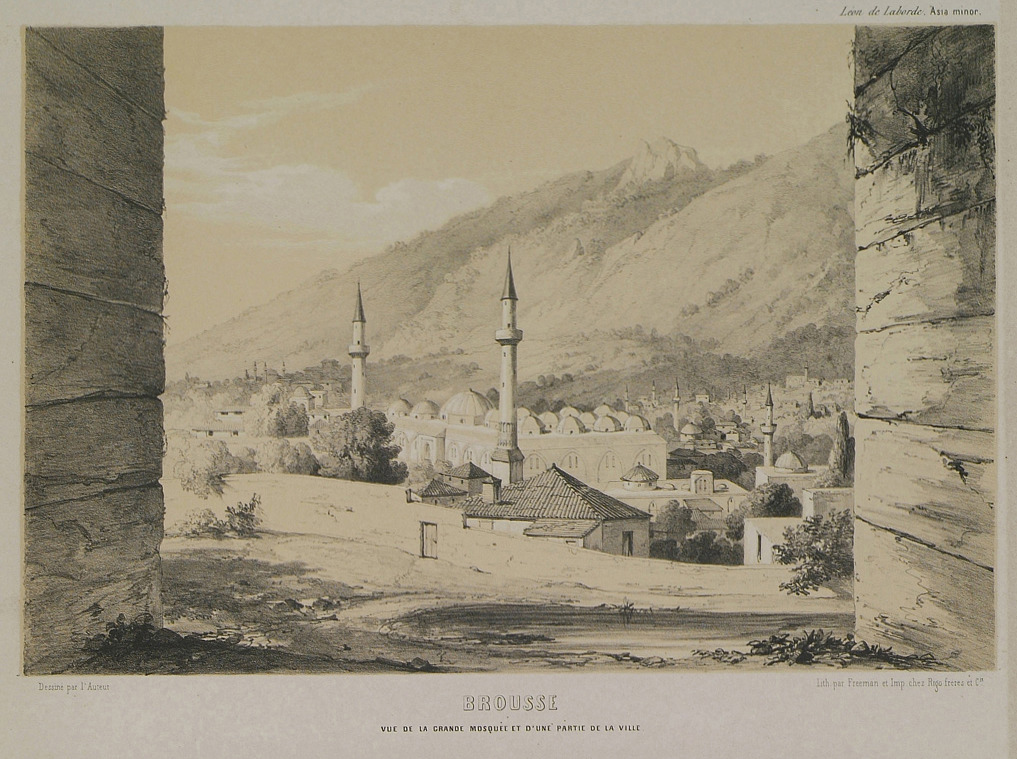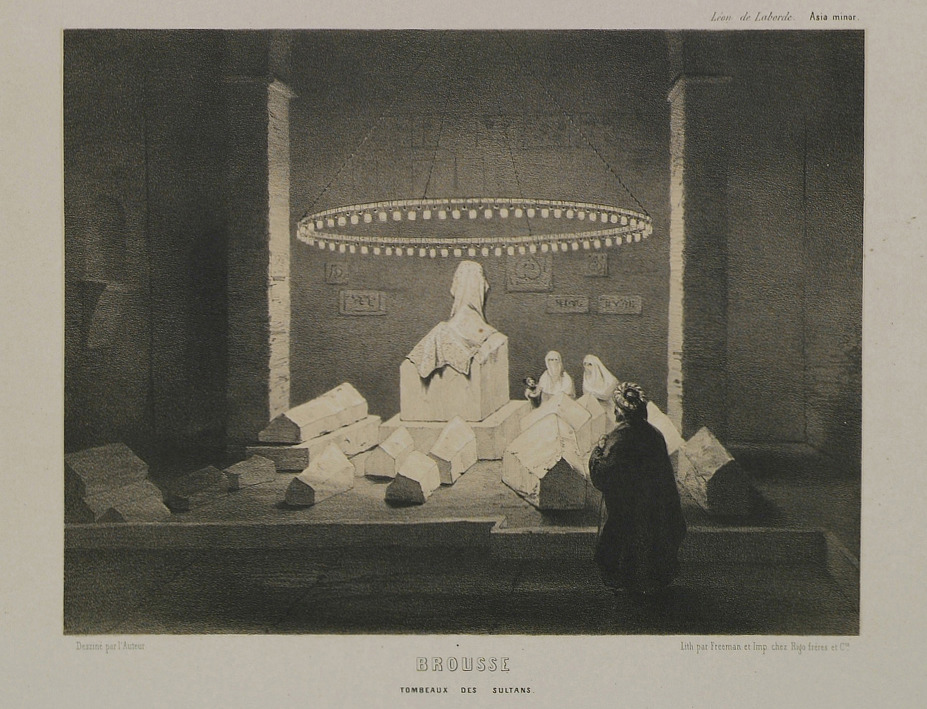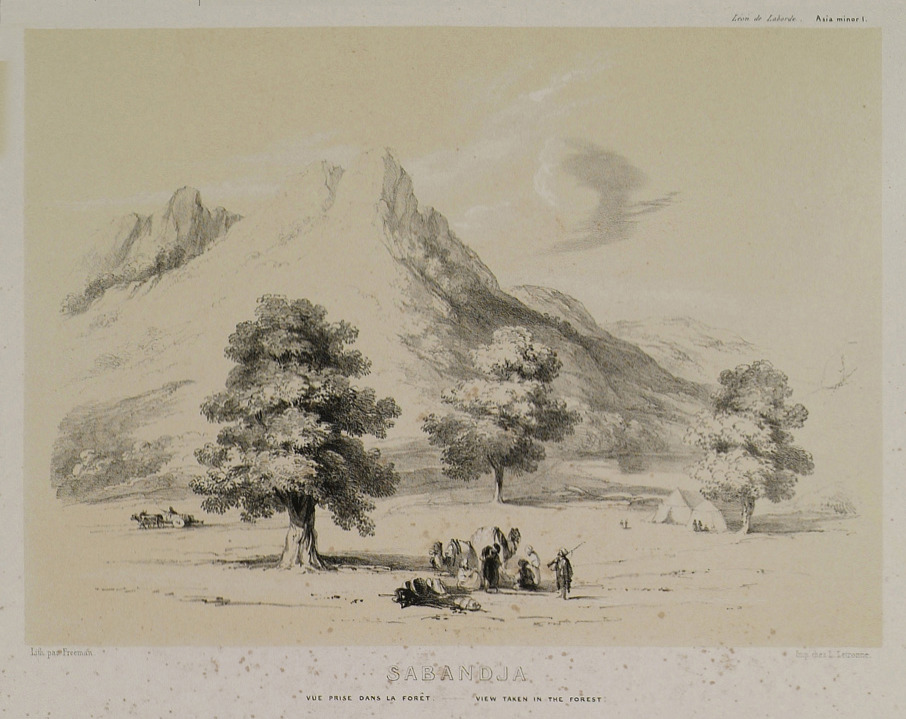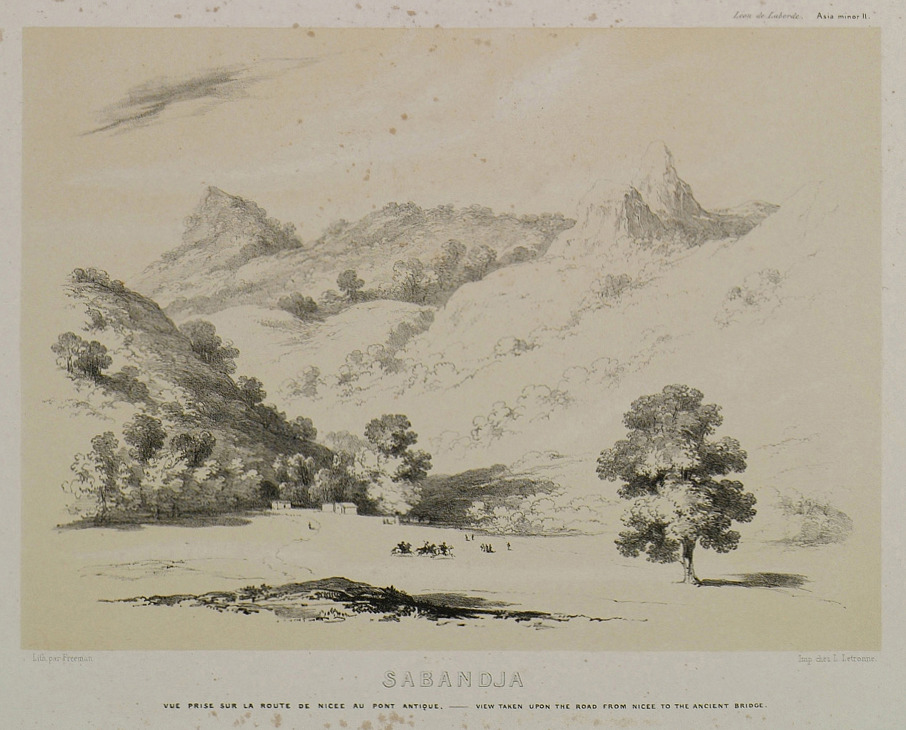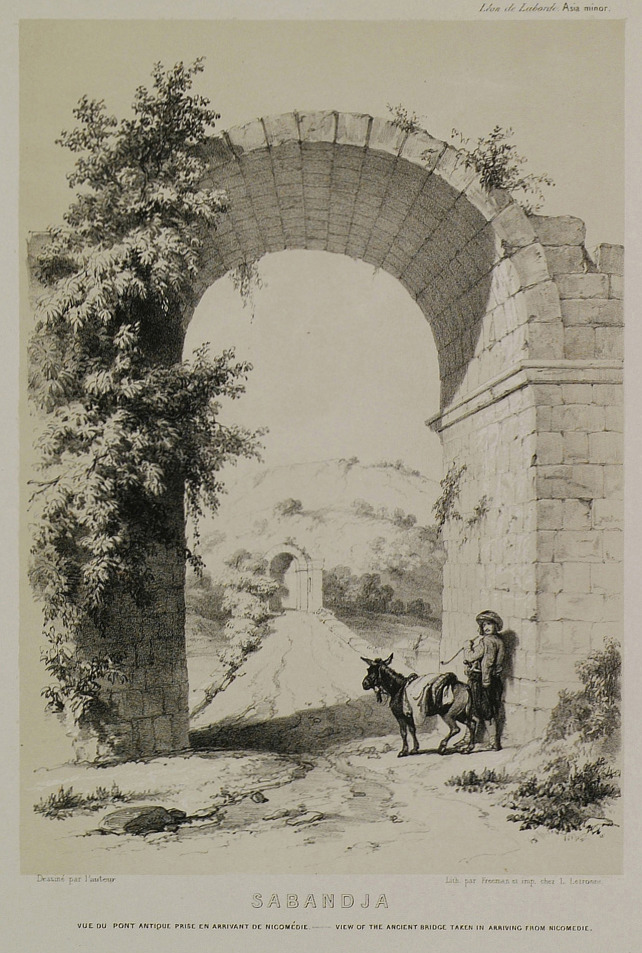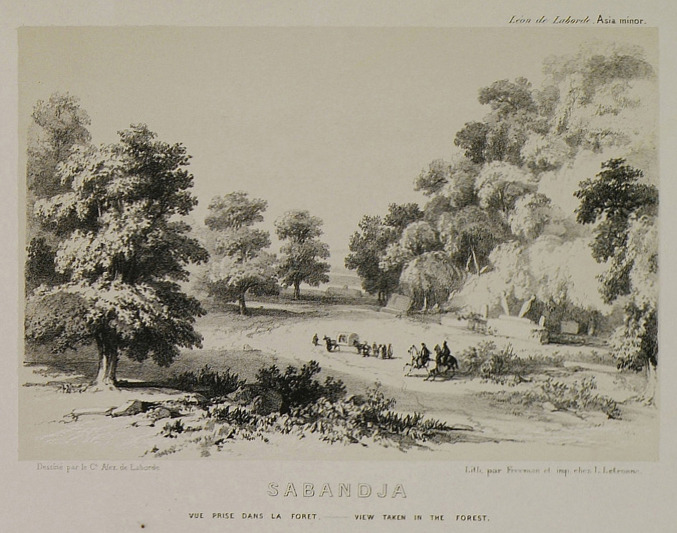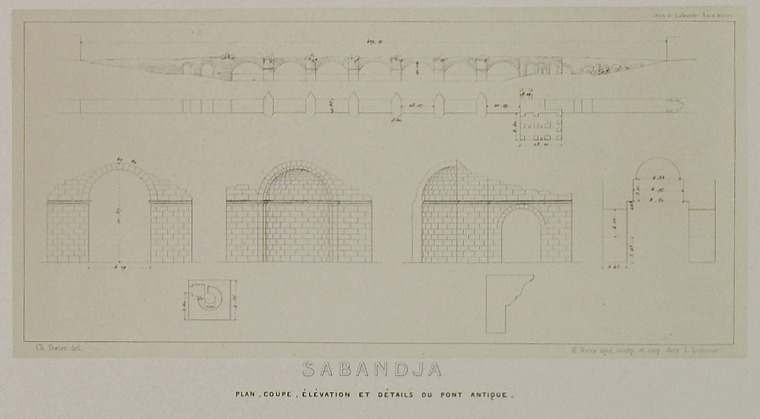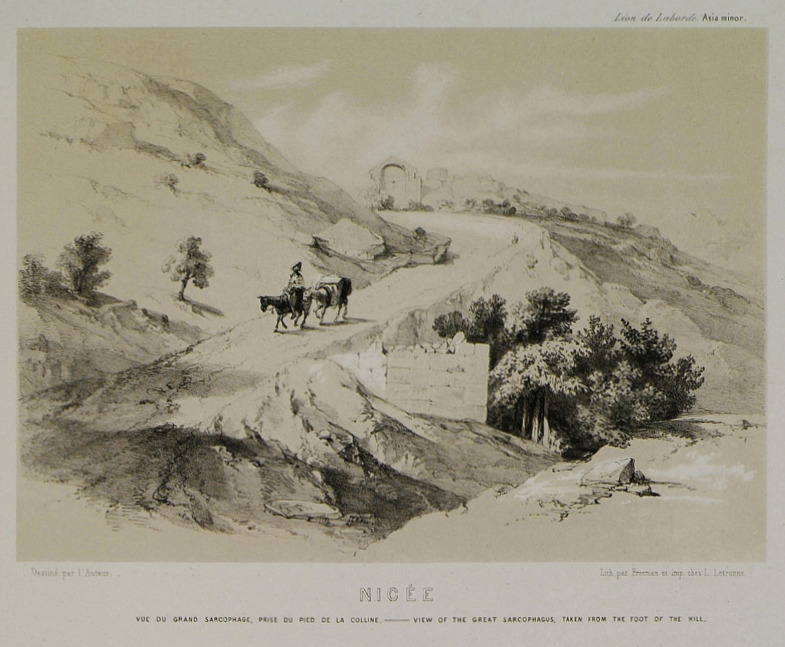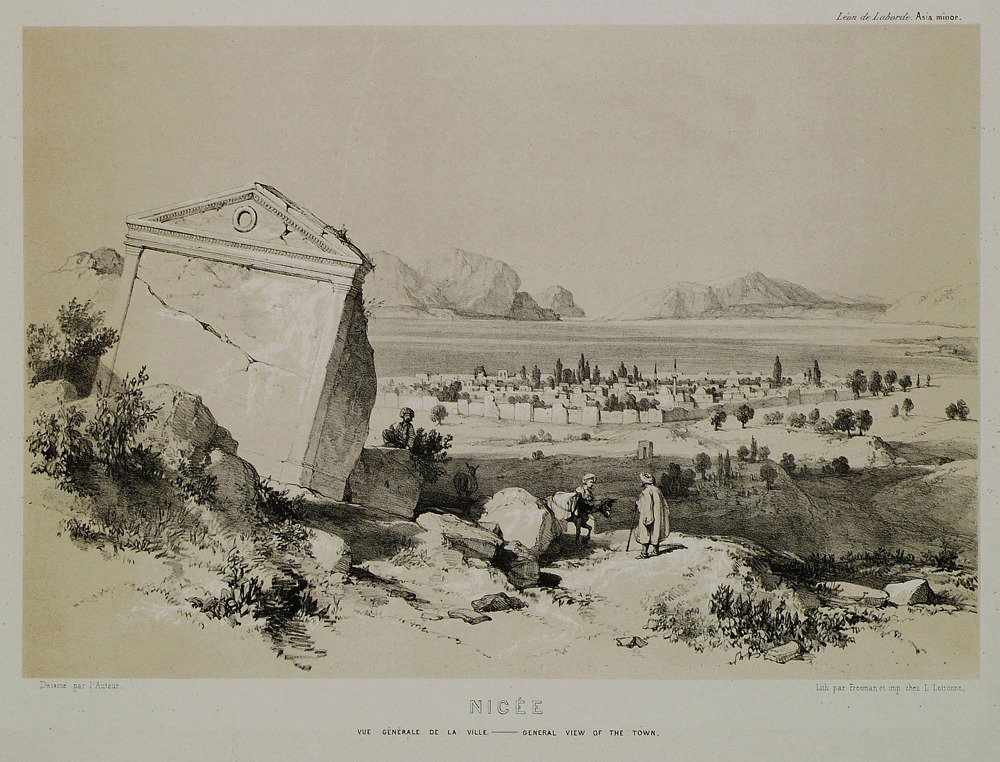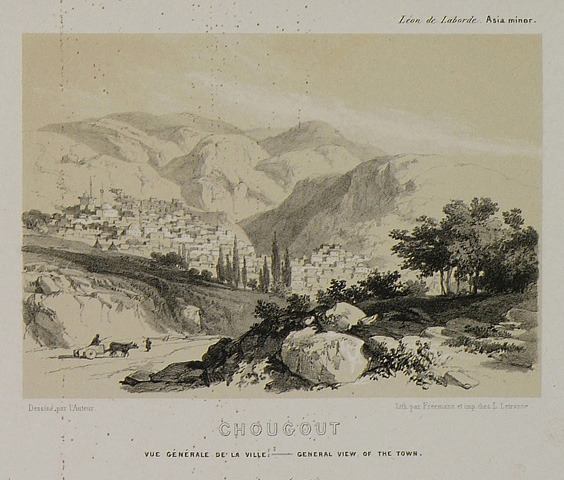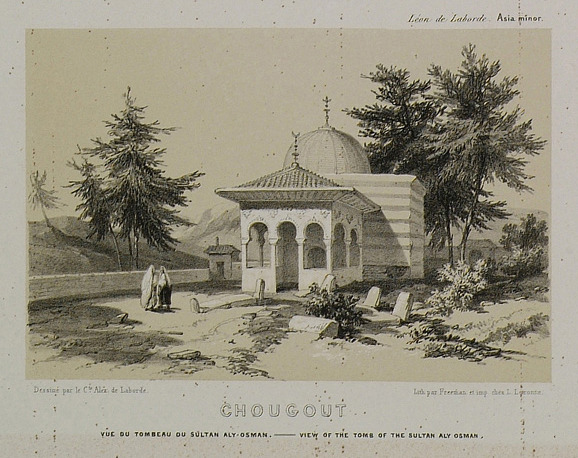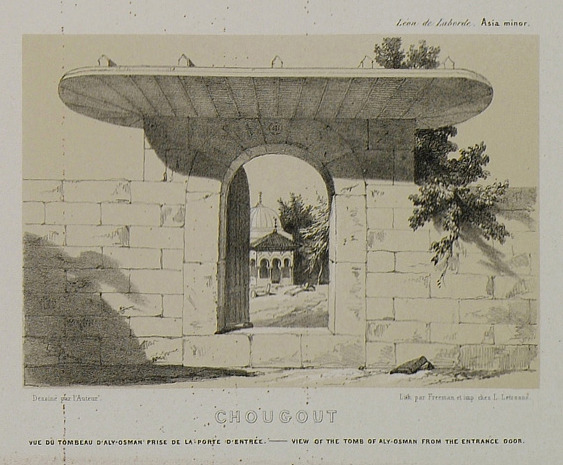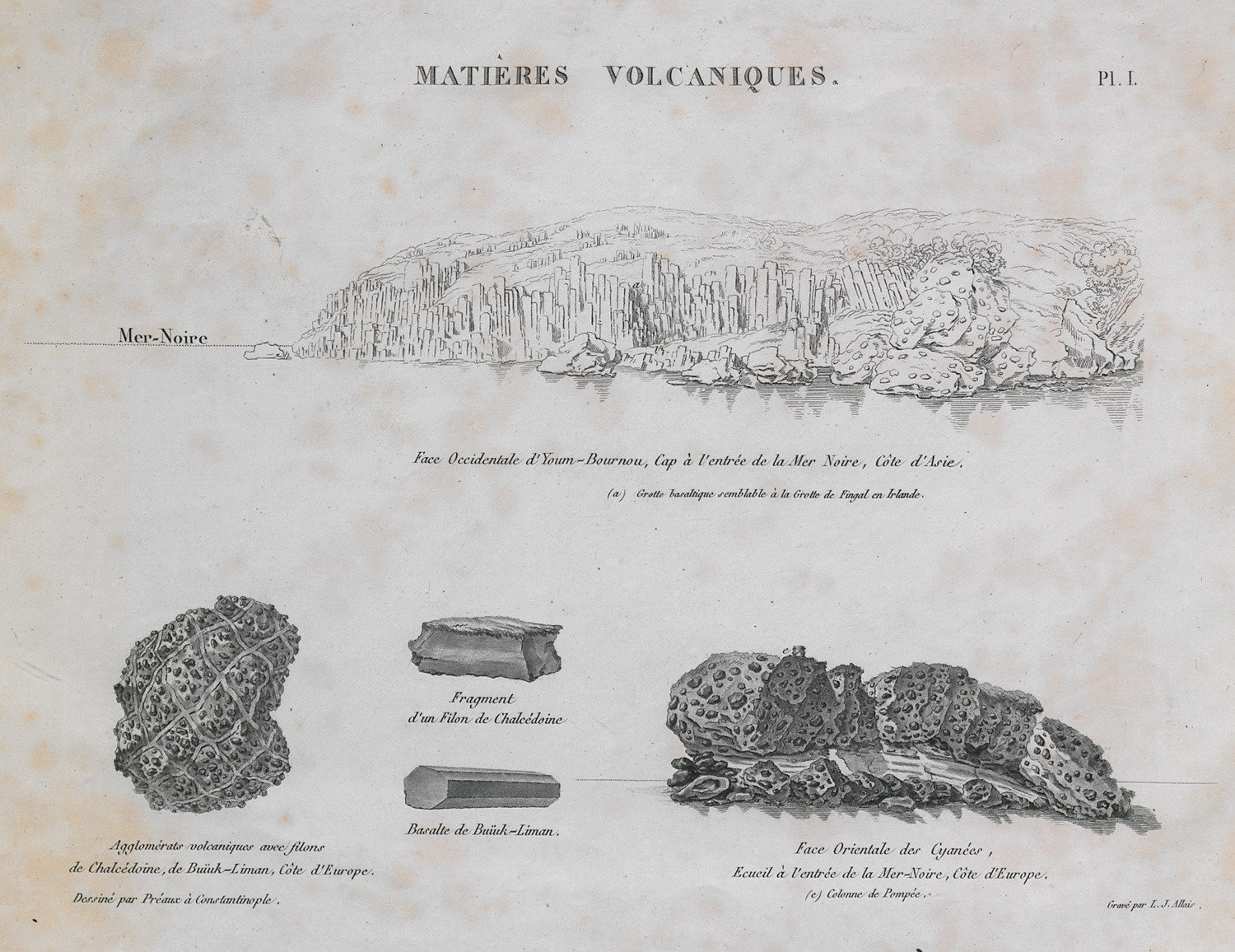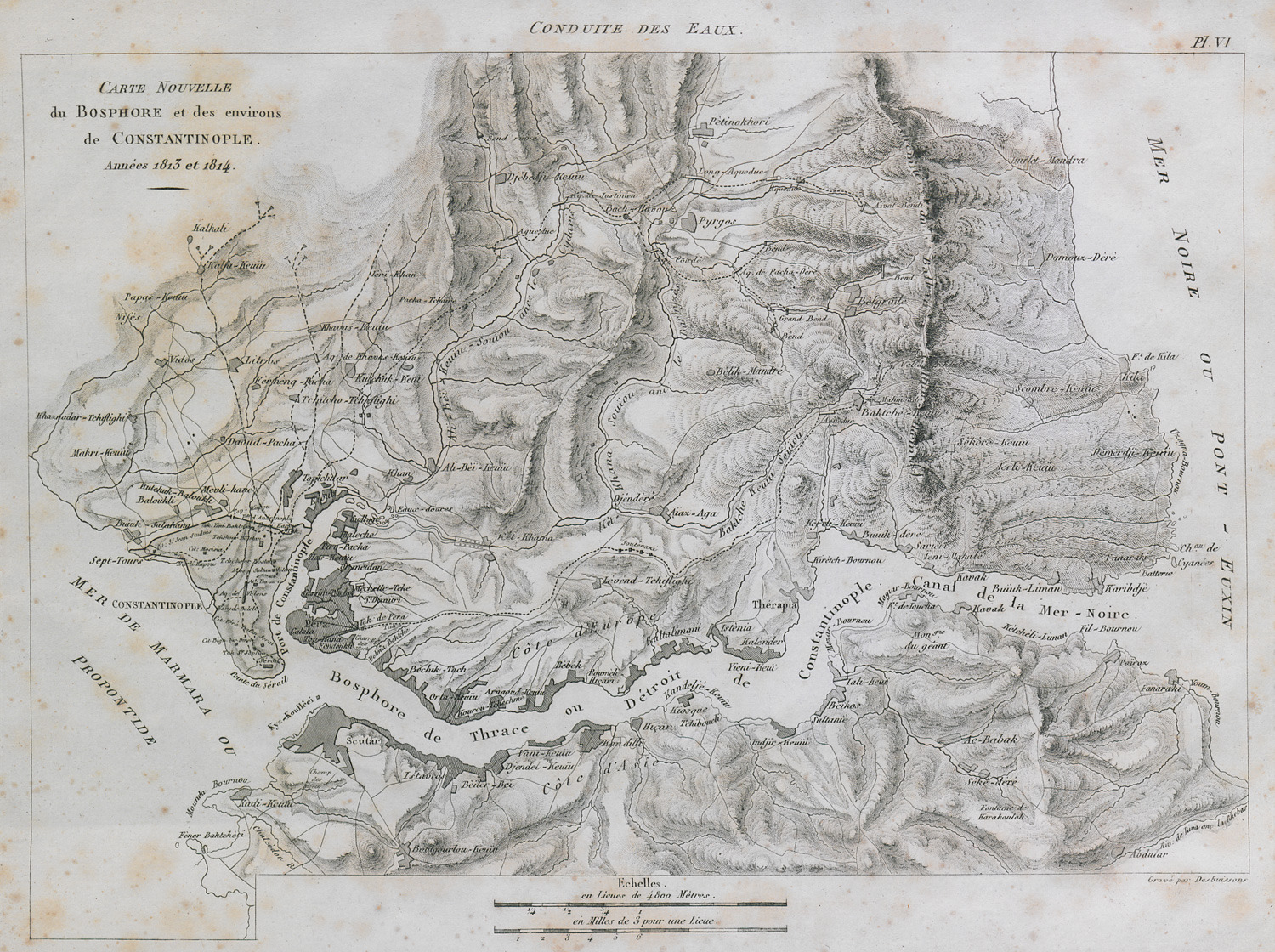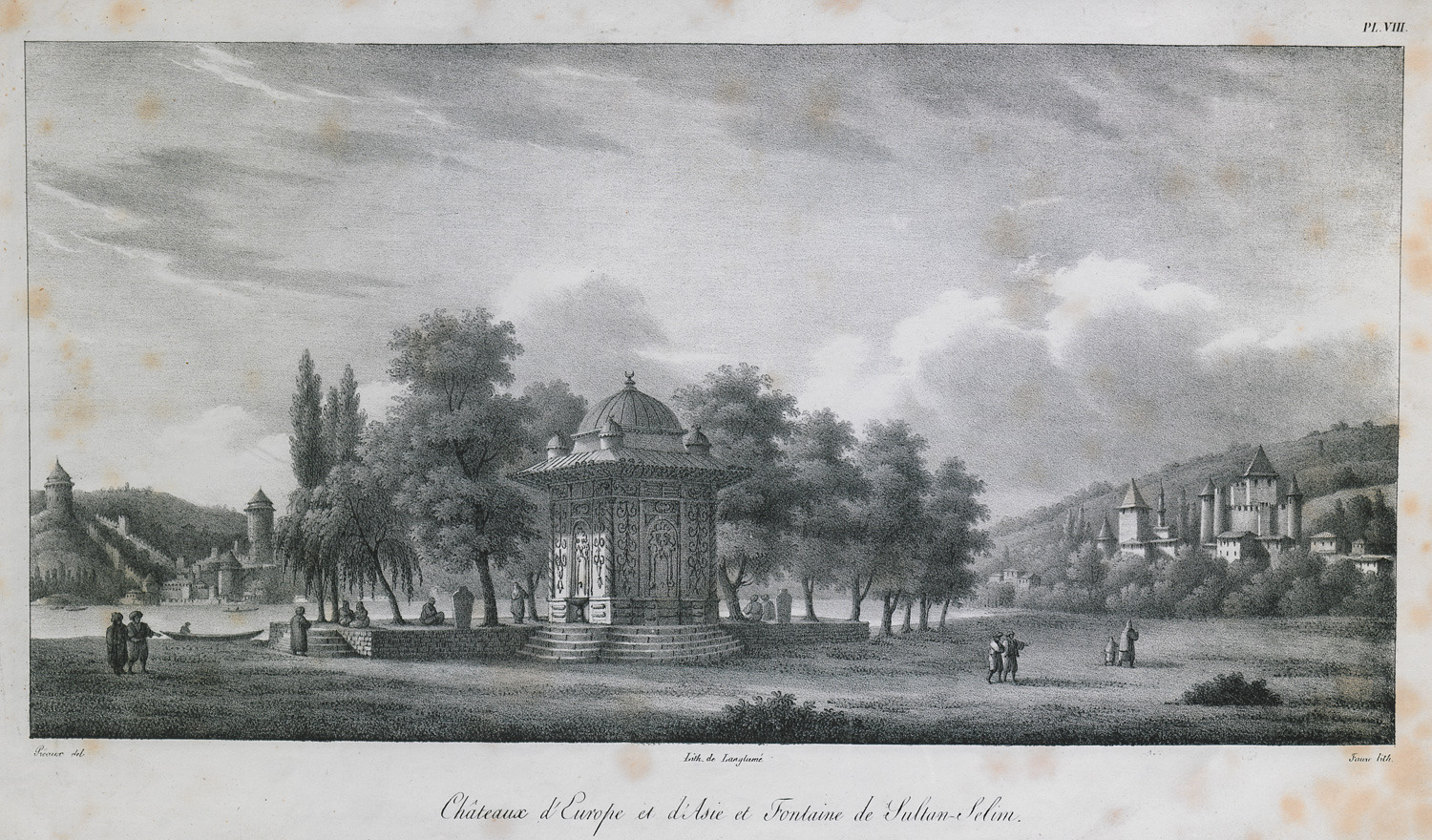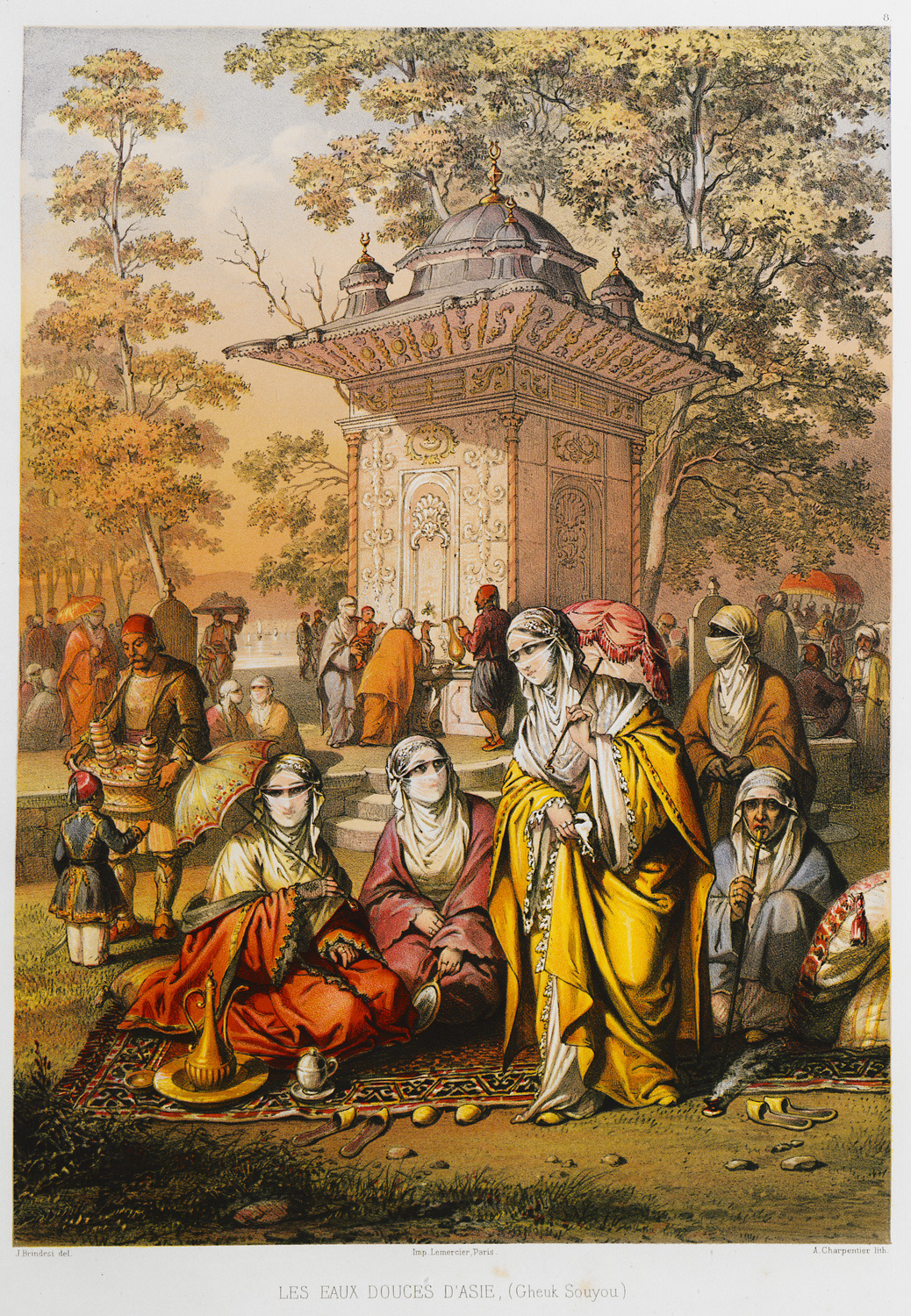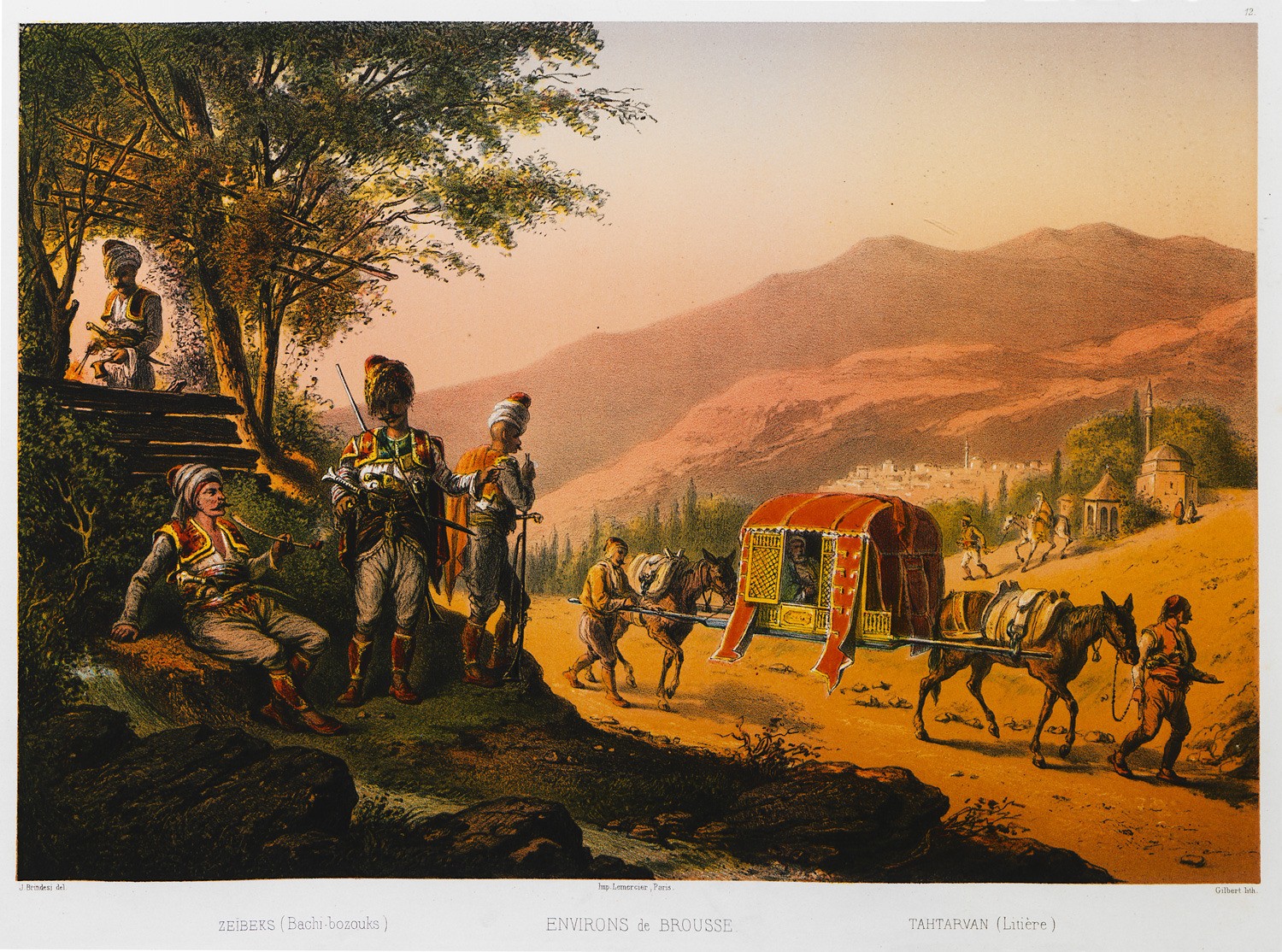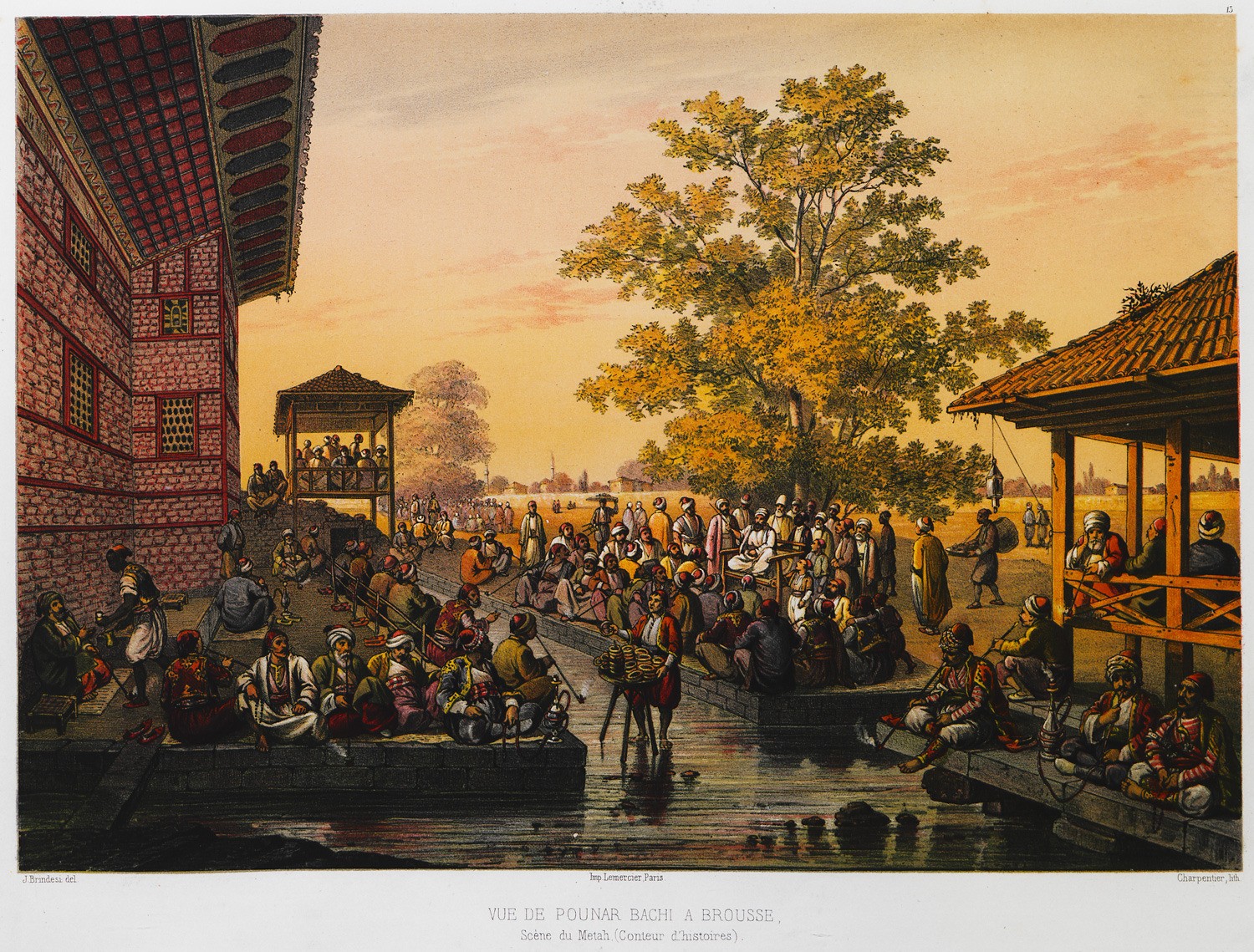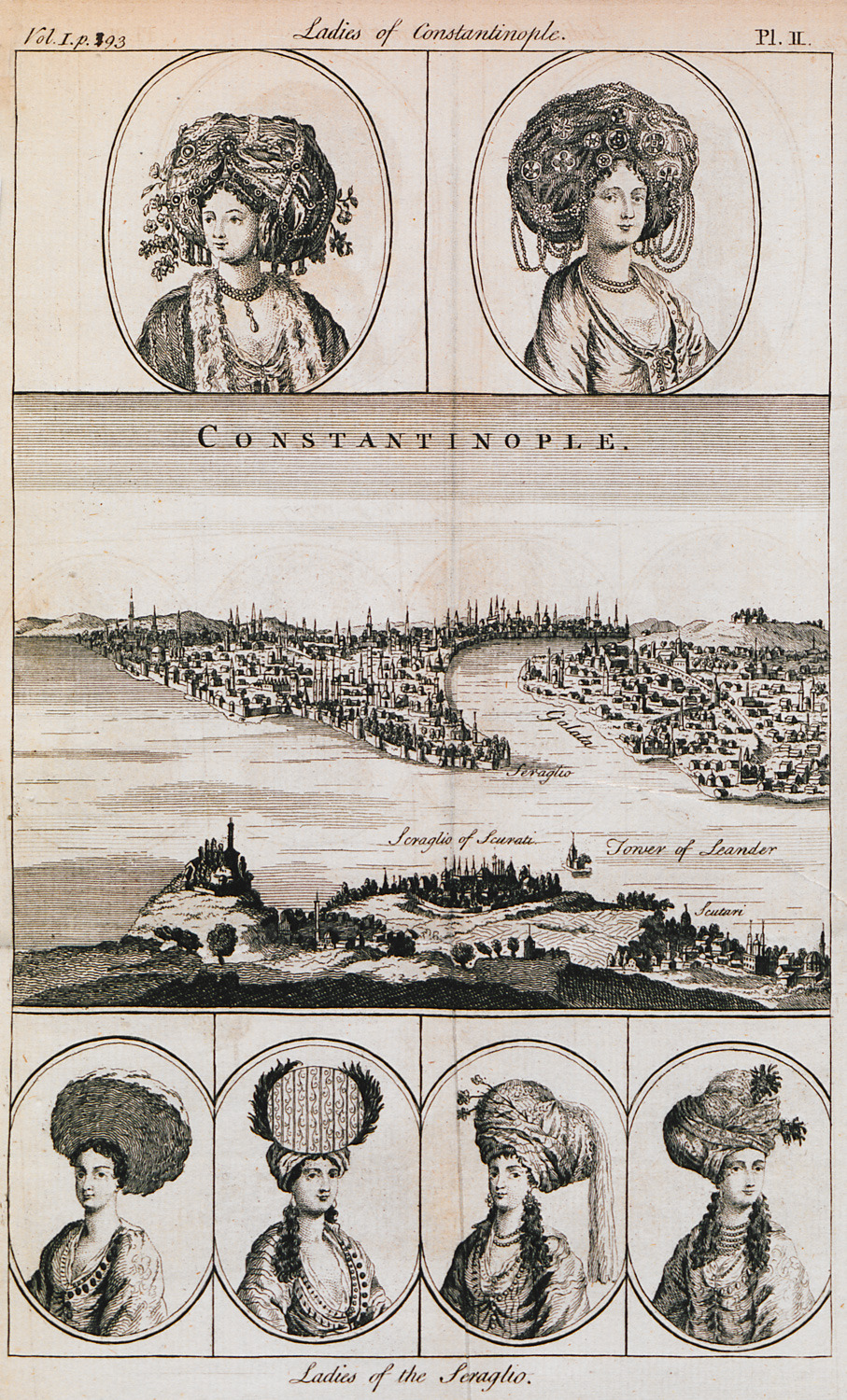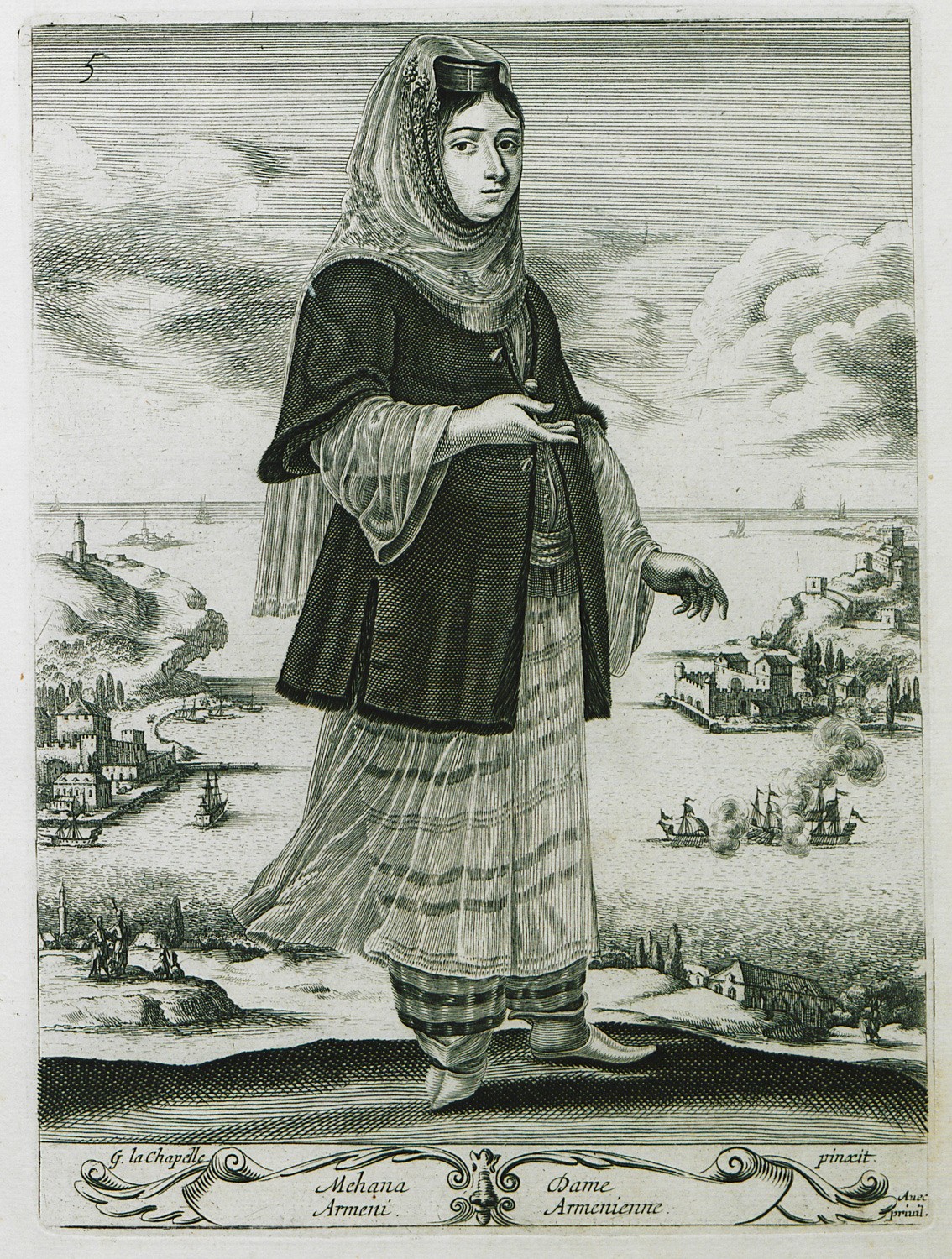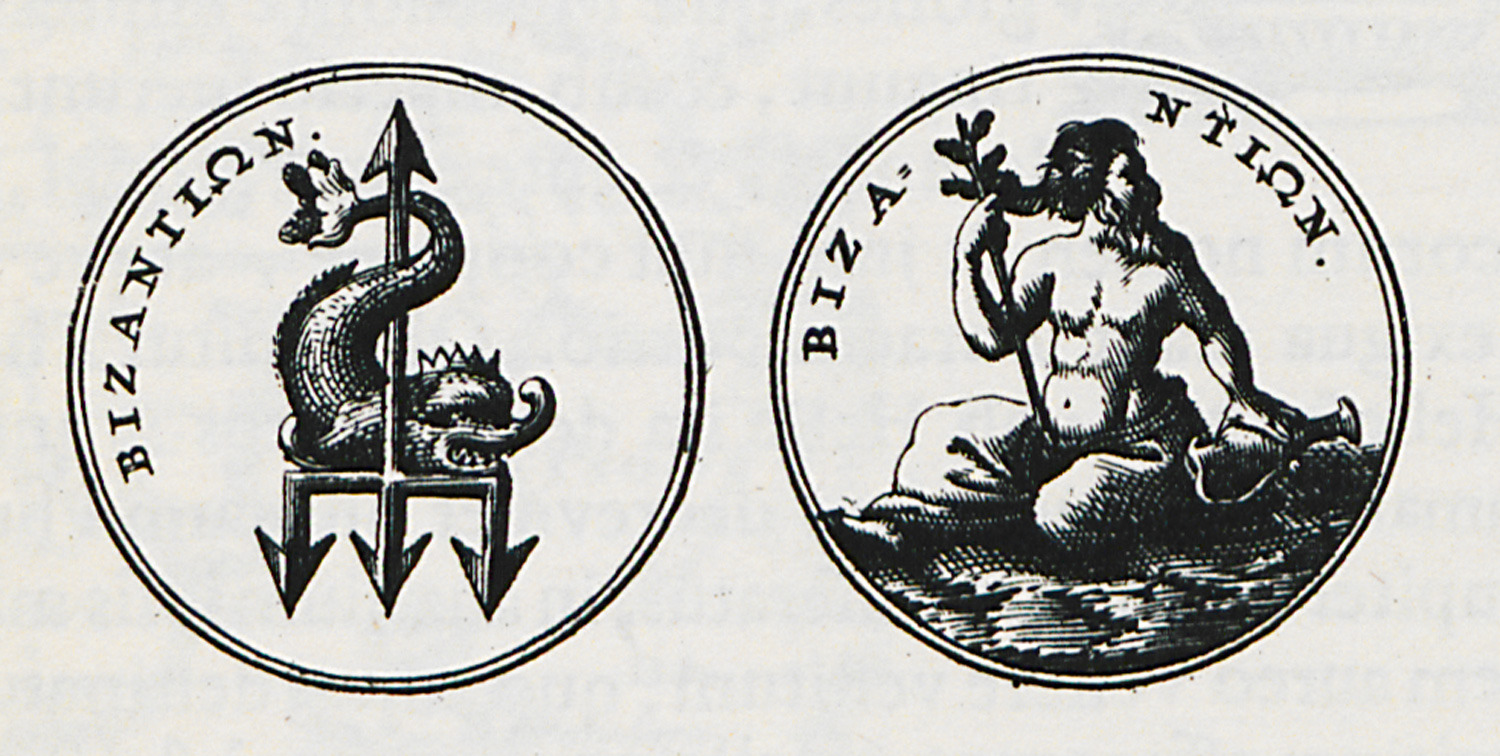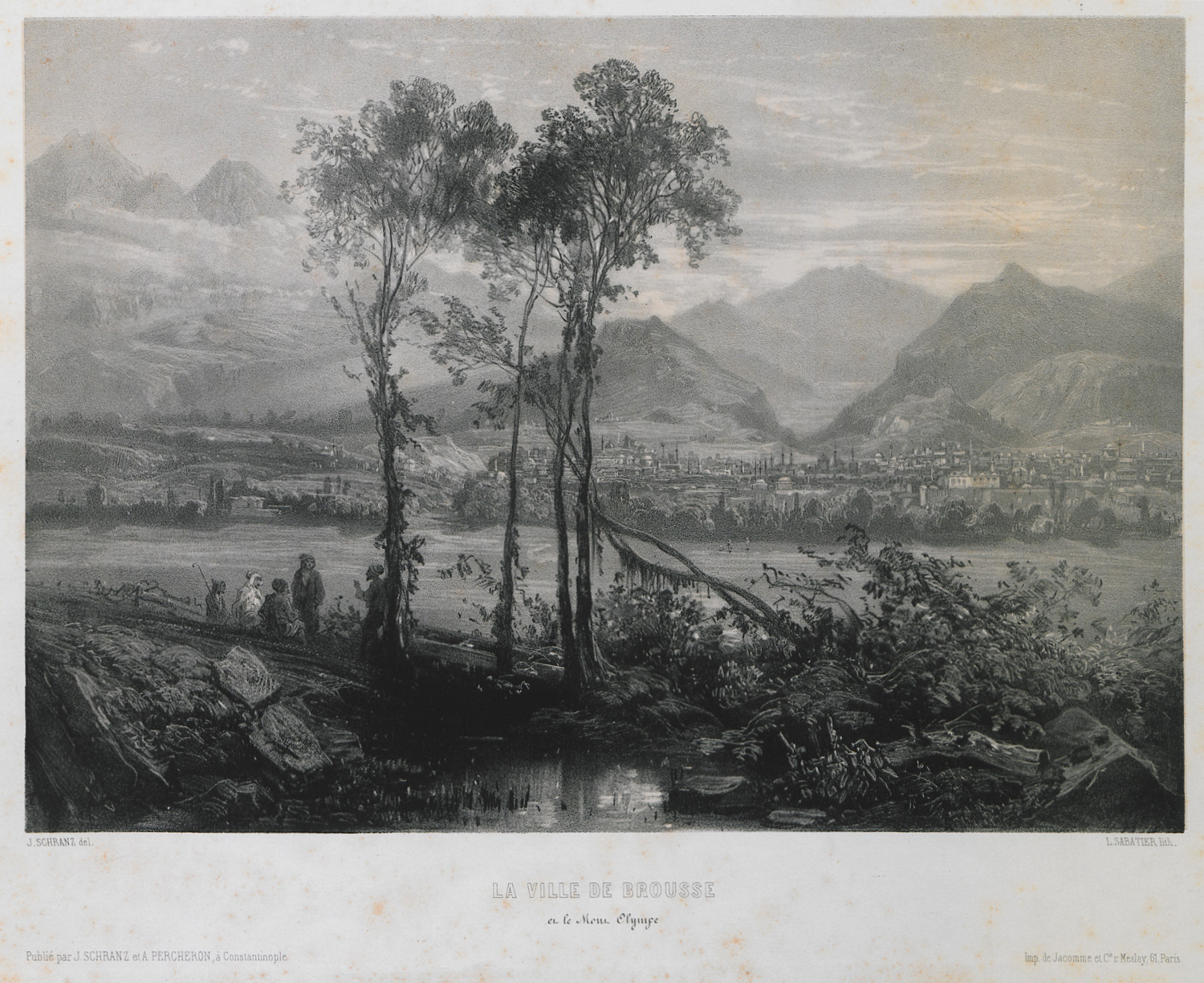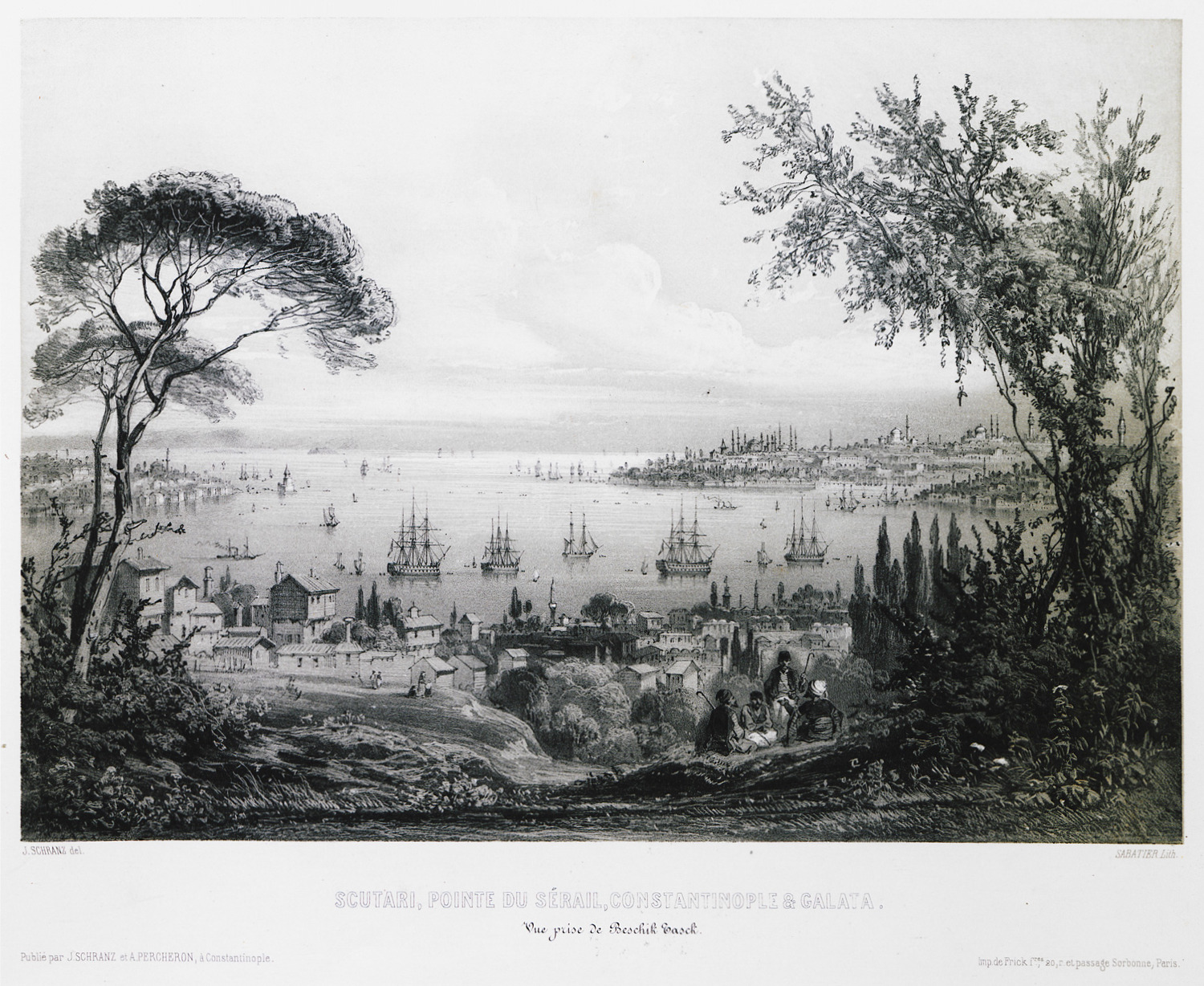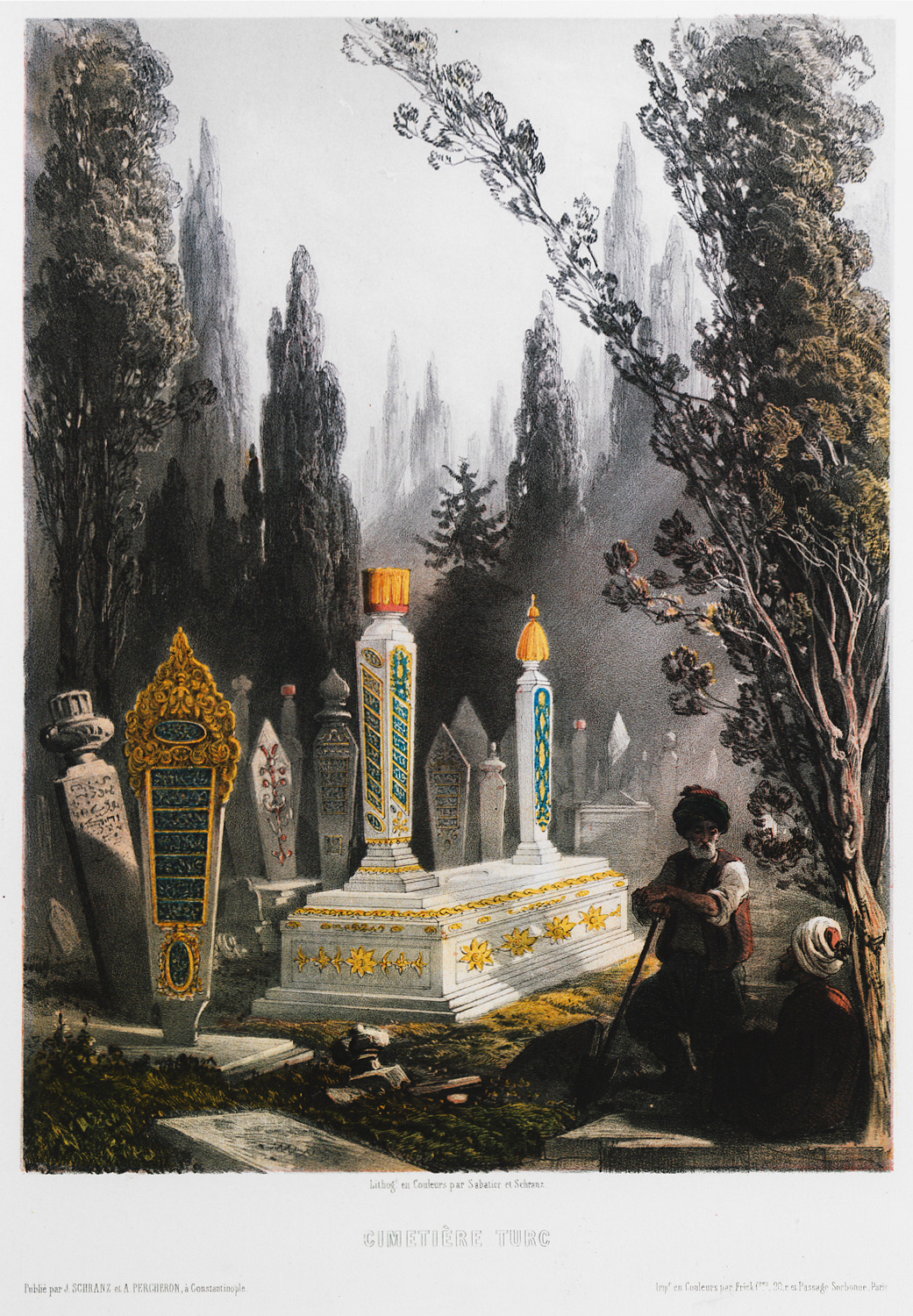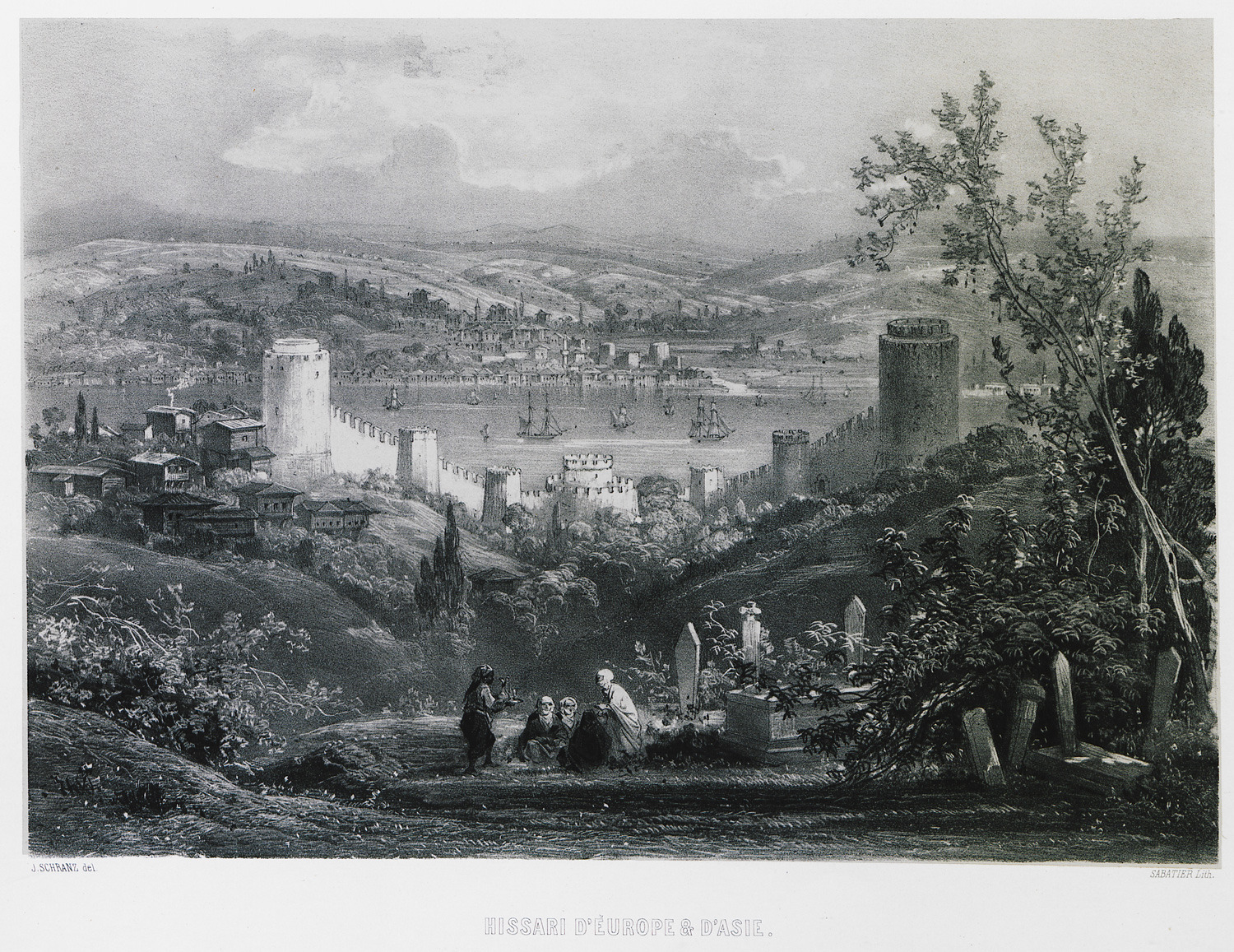Bithynia (159 Subjects)
The castles of Europe and Asia The Rumelian (1) and the Anatolian (2) castle, on the European and the Asian coast of the Bosporus. 3. The location of Sweet Waters of Asia.
The convergence of Bosporus and the Black Sea seen from Tarabya on the European coast of the Bosporus. Also shown is the position of Anadolu Kavağı (1) and its quay (4), Yoros Castel or Genoese Castle (2) and the structures added to the castle by the Ottomans (3), the Castle of Sultan Murad IV (5) and finally the European coast of the Bosporus.
Turkish man from Yalova.
The palace of Scutari, which was built during the reign of Suleiman I and demolished soon thereafter.
Seals from the lake of Iznik, Asia Minor.
View of Bursa and the Grand Mosque.
The Sultans' mausoleum in Muradiye architectural complex (külliye), Bursa.
Landscape at lake Sapanca (gr. Boane), on the outskirts of Izmit. In the background, on the left, an oxcart carrying wood to Istanbul, to repair damages caused by the fires.
Landscape at lake Sapanca (gr. Boane) on the outskirts of Izmit, from the road connecting Izmit to Justinian's Bridge on Sakarya river.
View of the bridge of Justinian or Sangarius Bridge. The bridge is situated on Sangarius (Sakarya) river, near Sabanca lake, outside Adapazari, on the route from Iznik to Izmit. Today the bed of Sangarius lies to the east of the bridge, which only covers the smaller tributary Sark Deresi river (anc. Melas). On the foreground, the now-lost triumphal arch at the western end of the bridge.
Landscape at lake Sapanca (Boane) outside Izmit.
Elevation, sections, details and plan of the bridge of Justinian or Sangarius Bridge. The bridge is situated on Sangarius (Sakarya) river, near Sapanca lake, on the outskirts of Adapazari, on the route from Iznik to Izmit. Today the bed of Sangarius lies to the east of the bridge, which only covers the smaller tributary Sark Deresi river (anc. Melas). Amogn the drawings, the now-lost triumphal arch at the western end of the bridge.
The sarcophagus of Nicaea, on the outskirts of the city.
General view of Iznik (Nicaea).
General view of the the city of Sögüt, birthplace of Sultan Osman I, in Bithynia.
View of the Mausoleum of Ertugrul, father of Osman I, in Söğüt, Bithynia. Osman I was buried at the same location as his father but his remains were later transferred to Bursa, where his mausoleum stands today.
View of the Mausoleum of Ertugrul, father of Osman I, in Söğüt, Bithynia. Osman I was buried at the same location as his father but his remains were later transferred to Bursa, where his mausoleum stands today.
Volcanic minerals discovered in Istanbul, around the area of the mythic Symplegades or Clashing Rocks: 1) The western side of Yum Burnu promontory, on the norheastern shore of the Bosporus, at the junction with the Black Sea. 2. Agglomerate of volcanic minerals with porphyry veins from Kadiköy (anc. Chalcedon), discovered by the author at Buyuk Liman, on the norheastern shore of the Bosporus. 3) Porphyry from Kadiköy (anc. Chalcedon). 4) Basalt from Buyuk Liman, norheastern shore of the Bosporus. 5) The eastern side of the northeastern end of the Bosporus, at the junction with the Black Sea.
Map of the Bosporus and its surroundings.
The fortresses of Europe and Asia on the Bosporus. In the foreground, the fountain of Küçüksu or fountain of Mihrisah Sultan, near the location of Sweet Waters of Asia (today Göksu Deresi).
Leisure scene at the location of Sweet Waters of Asia.
View of the surroundings of Bursa.
Leisure scene at Pinarbasi, a neighbourhood of Bursa. A story teller entertains the public.
Affluent women of Istanbul. Panoramic view of Istanbul. Women of the imperial harem.
Armenian woman of Istanbul. In the background, Kavakia, the fortresses at the junction of the Bosporus with the Black Sea.
Coin of ancient Byzantium.
View of Bursa. In the background, Mount Uludag (Olympus of Bithynia).
View of Istanbul from Üsküdar. In the background on the right-end, the Tower of Galata; on the left, the tower of Leander.
Muslim cemetery at Istanbul, possibly at Üsküdar, on the Asian coast of the Bosporus.
The Fortresses of Europe and Asia (Rumeli Hissari and Anadolu Hissari) on the Bosporus.


